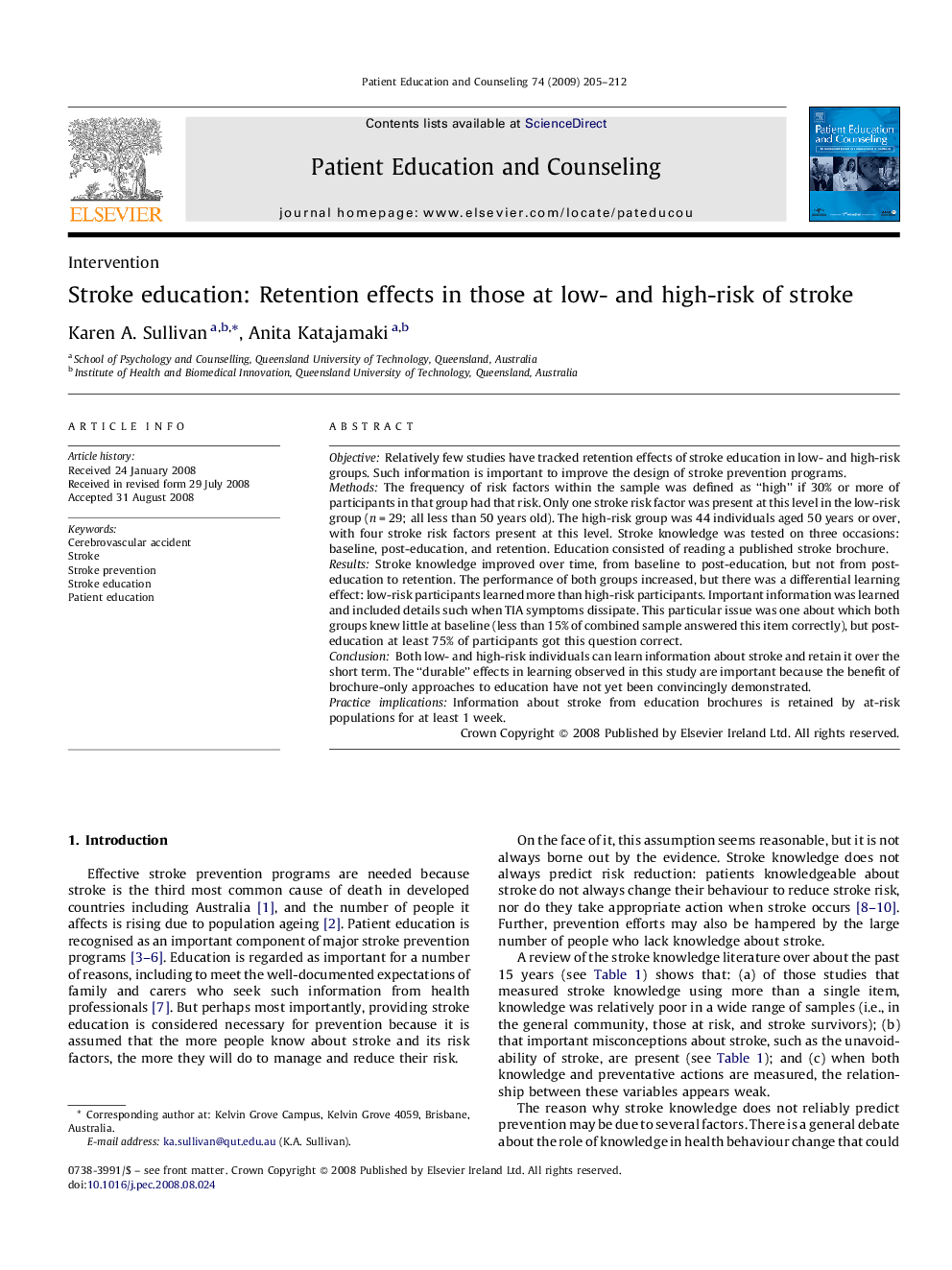| کد مقاله | کد نشریه | سال انتشار | مقاله انگلیسی | نسخه تمام متن |
|---|---|---|---|---|
| 3815867 | 1246107 | 2009 | 8 صفحه PDF | دانلود رایگان |

ObjectiveRelatively few studies have tracked retention effects of stroke education in low- and high-risk groups. Such information is important to improve the design of stroke prevention programs.MethodsThe frequency of risk factors within the sample was defined as “high” if 30% or more of participants in that group had that risk. Only one stroke risk factor was present at this level in the low-risk group (n = 29; all less than 50 years old). The high-risk group was 44 individuals aged 50 years or over, with four stroke risk factors present at this level. Stroke knowledge was tested on three occasions: baseline, post-education, and retention. Education consisted of reading a published stroke brochure.ResultsStroke knowledge improved over time, from baseline to post-education, but not from post-education to retention. The performance of both groups increased, but there was a differential learning effect: low-risk participants learned more than high-risk participants. Important information was learned and included details such when TIA symptoms dissipate. This particular issue was one about which both groups knew little at baseline (less than 15% of combined sample answered this item correctly), but post-education at least 75% of participants got this question correct.ConclusionBoth low- and high-risk individuals can learn information about stroke and retain it over the short term. The “durable” effects in learning observed in this study are important because the benefit of brochure-only approaches to education have not yet been convincingly demonstrated.Practice implicationsInformation about stroke from education brochures is retained by at-risk populations for at least 1 week.
Journal: Patient Education and Counseling - Volume 74, Issue 2, February 2009, Pages 205–212